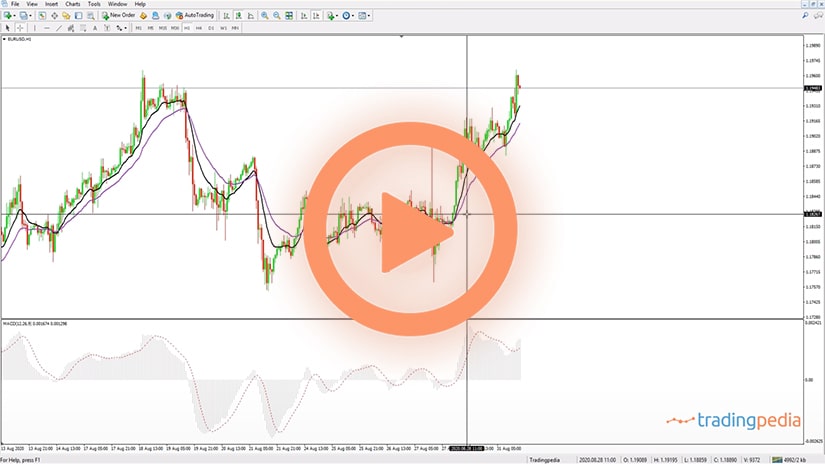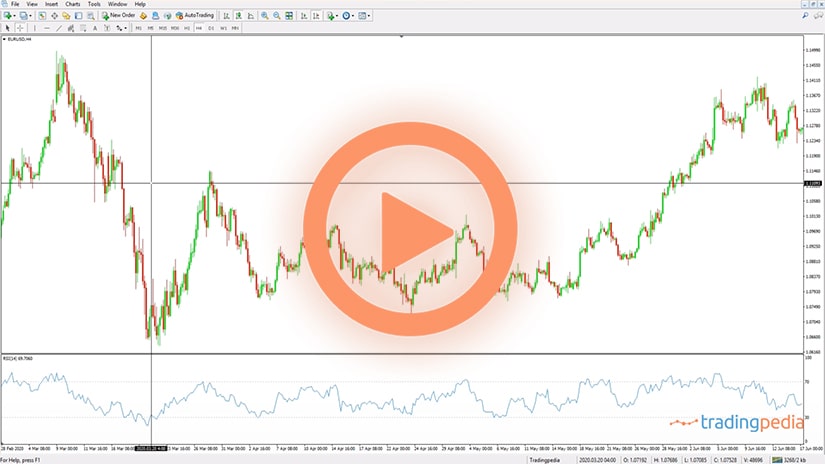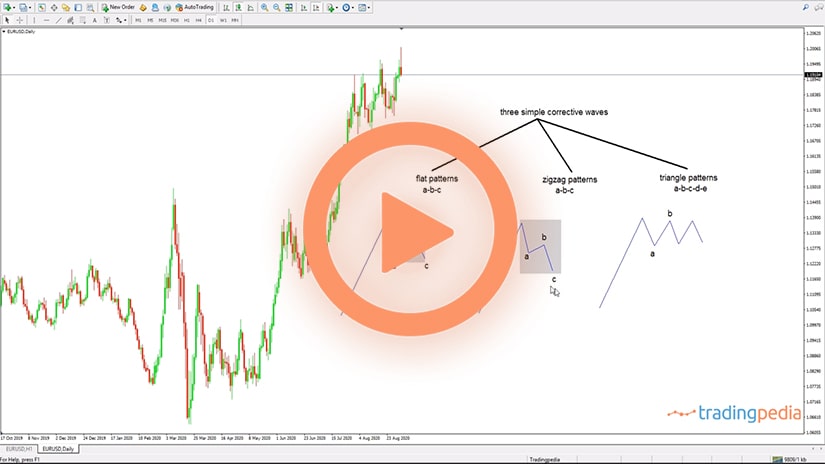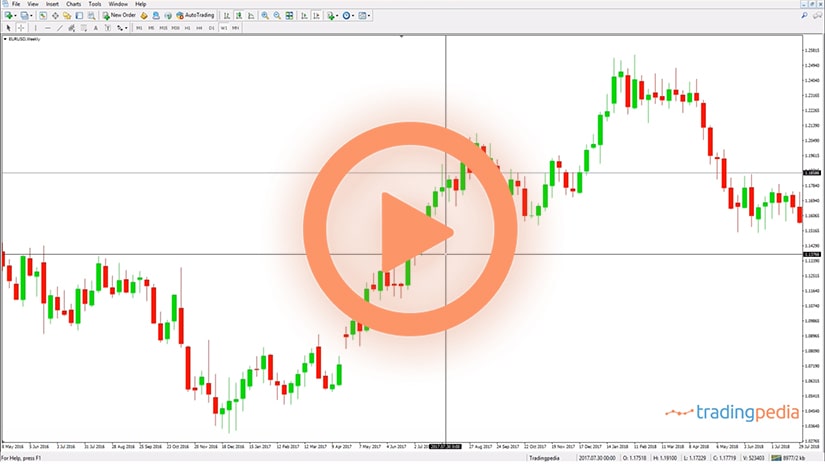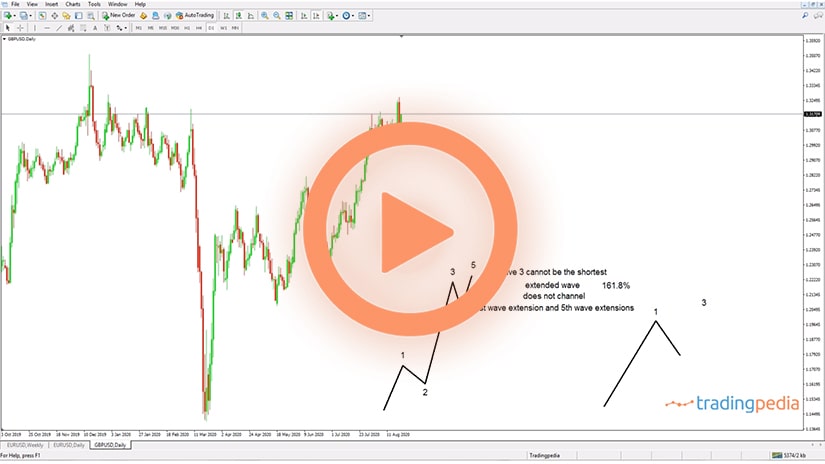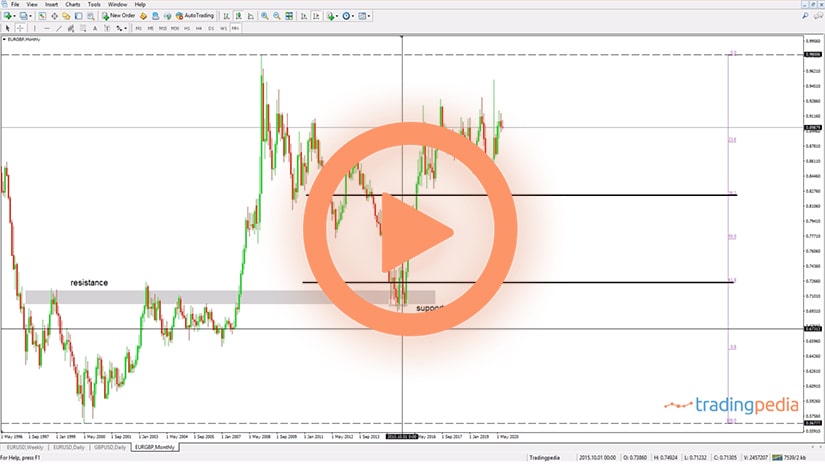
Hello there, this is tradingpedia.com and this video deals with how to trade with the perfect order setup. Before anything, this is a technical analysis strategy and it deals with interpreting multiple moving averages on one chart. It works on all the timeframes and currency pairs and on any other market like alternative investments, gold, oil, indices, etc.
The Perfect Order Setup – Overview
Again, we use moving averages, trend indicators. A moving average can be calculated either in a simple way, or exponential, smoothed, etc. I always recommend an exponential moving average for the simple reason that it reduces the lag between the actual price action and where the moving average is.
The perfect order setup implies four moving averages, from slower ones to faster ones. The first one is the EMA(20) and then the new one, the EMA(50). Next, the third moving average is the EMA(100) and finally, we add the mother of all moving averages, the EMA(200). This is the EURUSD 4h chart but everything we discuss here can be used on other timeframes and currencies.
The perfect order setup aims at identifying trends after they start. The aim is to ride the trend as much as possible by simply interpreting the environment. Because these four moving averages are a range from a slower to faster one, and so on, the aim is to identify the moment when the price action starts and all the moving averages respect the intended order. More precisely, they do not intersect.
Perfect Order – An Example
We see here that the EURUSD started the perfect order right here, as this is the moment when the EMA(20) moved above the EMA(50), the EMA(50) was above the EMA(100), and the EMA(100) above t he EMA(200). This is a bullish setup and we look to go long on it. Where?
We should interpret moving averages as the bigger the moving averages, the stronger the support and resistance provided. In this case, we have two choices. First, we go long when the perfect order started, and we want to add on dips for as long as the perfect order holds. It holds until here. We want to buy a retest of the first moving average that follows the EMA(20), and that’s the EMA(50) and that is it. Why? The more the price has the ability to come to the moving average, the slower the trend will be.
Then we want to buy the first move into the EMA(100). Even if the market comes to the EMA(50) again, we don’t want to buy here because the chances are that the perfect order will stop. As it did here.
In this case, we had three long trades – the first one at the start of the perfect order setup, the second one at the first test of the EMA(50) and the second one at the firs test of the EMA(100).
And then the market here simply ended the setup. However, the time passed, and another setup appeared and the price bounced again. So we go on the long side here, we add on the first EMA(50) test, on the EMA(100), and now we are with the price at 1.1955 with all three trades in line. Should we add at the EMA(200)? Yes, if the perfect order does not change.
Related Videos
Trading Exit
How about the exit? For the exit, on any long trade, the stop-loss comes at the biggest moving average. If this is the long trade, this is the risk and you calculate the reward by using a 1:2 or 1:3 risk-reward ratio and then trail the stop as the market moves higher. For the exit, either you use the risk-reward ratio or you simple wait for the perfect order to end.
This works well in trending environments. Such environments appear when central banks keep interest rate close to one another. For example, during the coronavirus crisis central banks lowered the rates to zero and the one that eased the most has the weakest currency and this kind of trending conditions appear.
A disciplined approach gives you the power to stay on the right side of the market. Obviously, look to add as the perfect order remains in place but also to book profits as price into your favor. Everything discusses here is valid in a bearish setup too and it is one of the most interesting setups used to trading trending markets.
Thank you for being here and bye bye.
